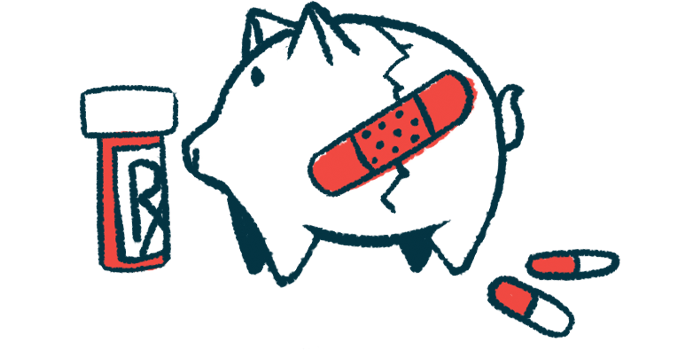Longer delays in PAH diagnosis lead to greater cost burden in US
Extra costs per month top $5K for patients with delay over 2 years: Analysis

Delays beyond one year in the diagnosis of pulmonary arterial hypertension (PAH) lead to more hospitalizations, and this translates into higher healthcare costs per patient each month in the U.S., a real-world study found.
Indeed, such extra costs per month were estimated at nearly $4,000 per patient after 12 months, and more than $5,000 per patient after 24 months, both as compared with a diagnosis delay that’s less than one year.
“Our findings underscore the need for timely PAH diagnosis through increased clinician awareness, earlier screening, and potential use of novel tools for PAH detection in order to minimize the downstream economic burden associated with delayed PAH diagnosis,” the team wrote.
The study, “Economic Burden of Delayed Diagnosis in Patients with Pulmonary Arterial Hypertension (PAH),” was published in the journal PharmacoEconomics – Open. It was supported by Janssen Scientific Affairs.
For more than 15% of patients in study, PAH diagnosis took over 2 years
PAH occurs due to a narrowing of the pulmonary arteries, the blood vessels that supply the lungs. The resulting high blood pressure forces the heart to work harder to pump blood through to the lungs, causing shortness of breath, chest pain, and fatigue.
It can be difficult to diagnose PAH in its early stages because the initial symptoms are usually subtle and similar to those of other lung diseases. As a result, there is often a delay in diagnosis of up to two or more years.
“Patients may only be diagnosed and treated when the disease is more severe, potentially leading to poorer treatment responses, faster disease progression, and worse clinical outcomes,” the researchers wrote.
To find out if delays in the diagnosis of PAH increase the burden on the healthcare system, the researchers drew on Optum’s Clinformatics Data Mart database to collect data on healthcare resource use and costs from 2016 to 2021 in adults with newly diagnosed PAH in the U.S.
The study included data from 538 patients — 326 women and 212 men — with a mean age of 65.6 years at the onset of symptoms. The median delay in diagnosis, that is, the time from the onset of symptoms to a diagnosis of PAH, was 11.8 months, or nearly one year.
Patients were divided into three groups based on the length of the delay. For more than half — 327 patients or 60.8% — the delay was no longer than one year. However, for 126 (23.4%), the delay was greater than one year but no longer than two, and for 85 (15.8%), the delay was longer than two years.
The most common symptoms at the onset of disease were shortness of breath (51.3%), chest pain (22.3%), swelling (15.6%), and fatigue (15.4%). In the period before the diagnosis, shortness of breath occurred in as many as 88.1% of patients.
Bulk of costs linked to high rates of hospitalization for patients
Compared with patients whose delay in diagnosis was no longer than one year, those with a delay greater than one year (but no longer than two) had 40% more hospital stays and 17% more outpatient visits.
For those with a delay in diagnosis longer than two years, the difference was even greater, with 71% more hospital stays and 26% more outpatient visits. They also had more than double the number of intensive care unit stays and readmissions within 30 days of discharge.
“A primary goal in PAH clinical practice is to reduce the burden of hospitalization among patients, as it is among the key indicators of disease progression,” the researchers wrote.
According to the team, “the burden of PAH could be mitigated through a wide range of recommended PAH treatments with demonstrated efficacy.”
On average, excess costs per patient per month were $3,986 for patients with a delay in diagnosis greater than one year (but no longer than two) and $5,366 for those with a delay beyond two years compared with patients with a delay no longer than one year.
A large proportion of these costs were driven by hospitalization expenses, which averaged $3,248 in patients with a delay in diagnosis greater than one year (but no longer than two) and $4,048 in those with a delay longer than two years.
“Our results highlight the importance of early PAH diagnosis as delays are associated with downstream increases in [healthcare resource use] costs following diagnosis, particularly due to high rates of hospitalization,” the researchers wrote.
Our findings suggest that diagnosing individuals within 12 months of their PAH symptom onset could lead to a reduction in health care costs of more than US$20 million in the year following their diagnosis.
Overall, significant reductions in cost would be likely if the goal of achieving an earlier PAH diagnosis was achieved, the team noted.
“Our findings suggest that diagnosing individuals within 12 months of their PAH symptom onset could lead to a reduction in health care costs of more than US$20 million in the year following their diagnosis,” the researchers wrote.
“These findings highlight the need for increased awareness and earlier screening in routine clinical practice, as this could provide an opportunity for earlier treatment which might lead to better clinical outcomes among patients with PAH and reduced economic burden for payers, employers, and society at large,” they concluded.









